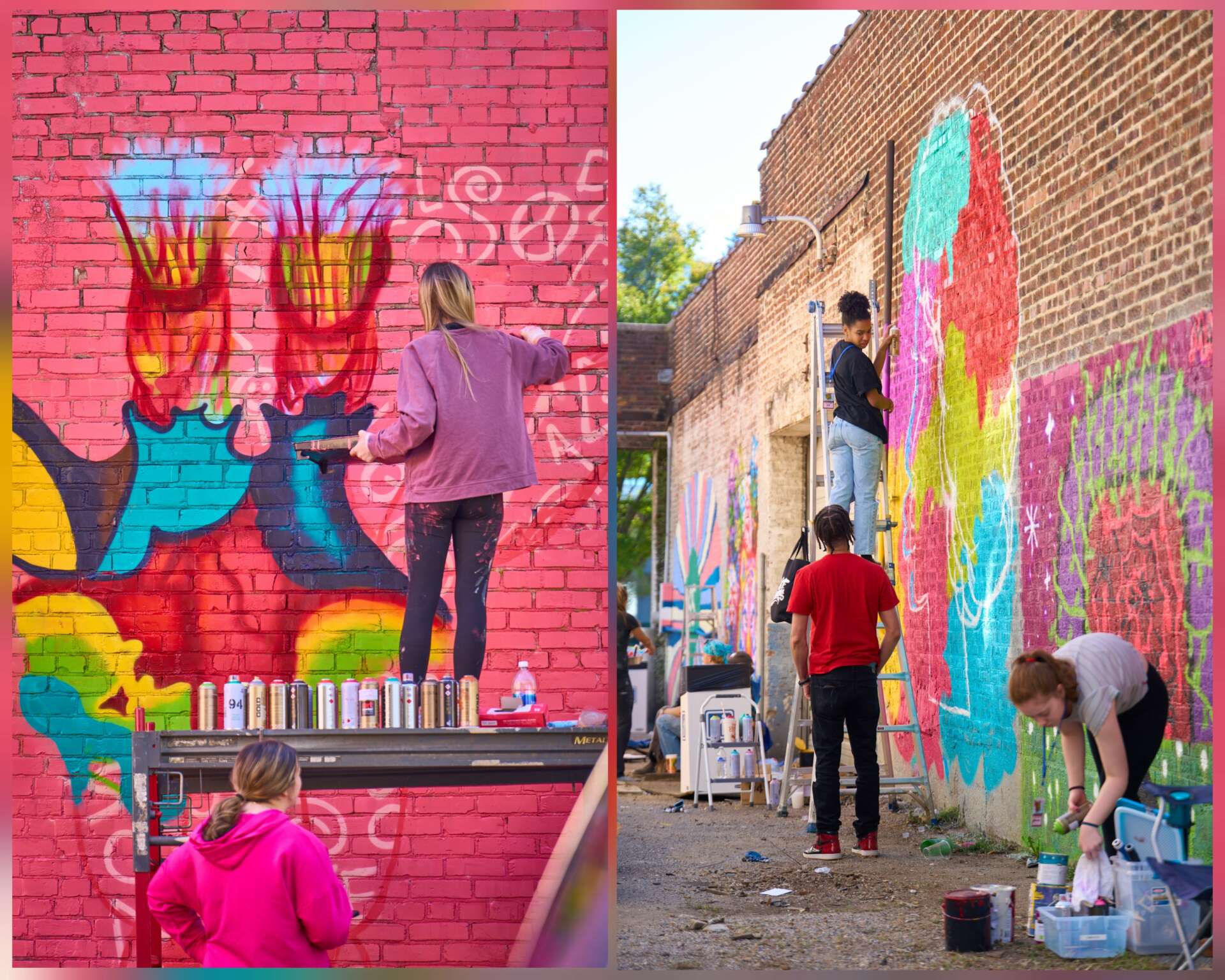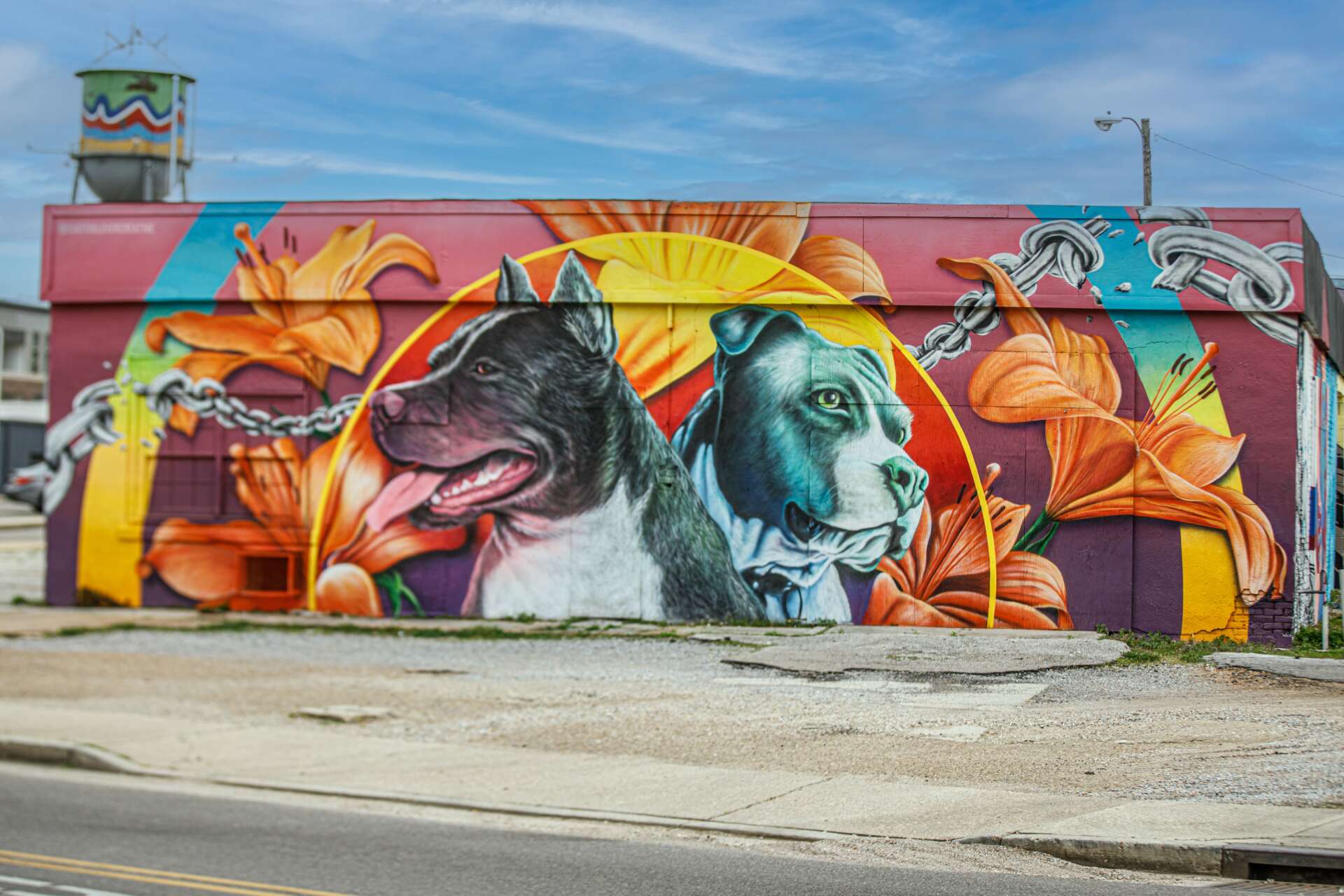We caught up with the brilliant and insightful Karen Golightly a few weeks ago and have shared our conversation below.
Hi Karen, thanks for joining us today. What were some of the most unexpected problems you’ve faced in your career and how did you resolve those issues?
In 2017, Paint Memphis held its largest festival, with 167 artists taking over an entire city block and an underpass with murals. It was a huge undertaking, and we worked diligently to get lifts, bucket trucks, scaffolding, ladders, bucket and spray paint, and all sorts of artists, vendors, volunteers, and participants (one woman fainted). So, it was a lot. I had to manage business owners, the City of Memphis, hula hoopers, artists, volunteers, the bucket truck owner, and a group of skateboarders. I had curated this event as well, putting a couple who were painting together on a huge, privately-owned building facing the main street, Lamar Avenue. The couple broke up four days before the event, so the girl painted around the corner, and the guy, who was pretty angry about the break up, painted the largest zombie rising up out of a bed of roses I’ve ever seen, on his wall.
Flash forward to about two weeks later, when some people decide this zombie was a symbol of racism. I ended up in front of the City Council, who cut off my presentation before I could even finish. One councilman called me racist, and another told me I was a devil worshipper. I told him that my Baptist deacon father would never have allowed that. So, yes, I was angry back. I gave them a handout of my presentation, which included the Visual Artists Rights Act of 1990. That states, that if any entity, including the property owner or the city, paints over a work that has been given permission to be painted, then it’s a violation of the artists rights (that’s the short summary).
The City Council deemed some of the murals satanic and decided to paint over them. Poor communication, and Memphis’ Beige Patrol painted over the wrong mu (including WRDSMTH’s and Meg Zany’s as well as 14 others), but could not paint over the zombie as it was on private property. This ended in a very long and drawn out lawsuit, in which 12 artists were awarded $250,000 total.
It also resulted in people all over Memphis talking about art, something that had not happened before or since. Everyone had an opinion on that zombie. But they also talked about community and how art represents a community. That fortunately forced Paint Memphis to reconsider the way we interacted with the neighborhoods in which we painted. And we also added the “no zombie” policy in our guidelines. Plus, it taught me so much about the importance of public opinion and how people of color feel marginalized in this historically segregated city. It also taught me so much about my own ingrained prejudices and how I had to put myself in other people’s shoes to better understand how they feel about art in their own neighorhoods.


Karen, love having you share your insights with us. Before we ask you more questions, maybe you can take a moment to introduce yourself to our readers who might have missed our earlier conversations?
I’m an English and creative writing professor at Christian Brothers University in Memphis, which is a strange way to end up founding an nonprofit based on public art. However, I am also a street art photographer, and I had traveled all over the world taking photos of graffiti and street art , but when I came back home to Memphis, there just wasn’t in. At least not in plain view. So, I ended up going into abandoned buildings and ditches, all sorts of places where I probably didn’t need to be. And I started writing about street art. But I kept coming back to the fact that we didn’t have much in Memphis. I contacted one of the founders of Paint Louis in St. Louis, and he helped me to figure out who to contact in our City government about this type of project and organization. It took three years, but we ended up painting an old, never used, flood wall in North Memphis that first year. I had a photographer, a graffiti writer, and a woman who knew a bunch of muralists, and we all worked incredibly hard to make that first year happen. From there, we painted both sides of the flood wall the next year, then started moving around each year to go into different neighborhoods and communities. 2024 will be our tenth year of painting over 40,000 square feet with over 100 artists. And we’ve started an arts education program, and are working toward getting a brick and mortar headquarters for all of this exciting programming we have in the future. In the meantime, I’m still a professor of English and creative writing, and the Director of Development for Paint Memphis, but leading a nonprofit is something I never dreamed I would do. It’s been the hardest job I’ve ever had, but it’s definitely the most fulfilling. Paint Memphis brings art to the streets, so that everyone can have access to art.


Is there a particular goal or mission driving your creative journey?
I believe that art changes lives. That’s the mission that has driven me since the beginning. At first, I just wanted to get some artists together to paint a wall, and we did that. And it changed their lives. They came from all over the country and shared ideas and techniques. The more experienced painters mentored the newer ones. The graffiti writers showed their spray skills to brush art muralists. And volunteers and participants talked to artists and learned their stories. Now nine years later, it’s turned into something more. Now communities are changing through the projects that we paint in their neighborhoods. Crime is decreasing in areas with more public art in them. Our work is featured all over the country, thanks to social media and all of the many people who record videos or take photos in front of our art. And people who might never enter a museum or gallery get to see art every single day. That’s what makes it for me, to see how all of these people are influenced by this crazy idea a few people came up with 12 years ago. Also, it’s nuts how one person can truly make a difference in the lives of so many. I never really knew that was possible.


What do you find most rewarding about being a creative?
The most rewarding part of being a photographer, writer, and a curator is to see the reactions of the people who see, read, or participate in my work. The reactions of people driving or walking by make it worth all of the heavy lifting of ladders, scaffolding, and 5 gallon buckets of paint. On a Sunday morning, the day after Paint Memphis, I was picking up the garbage, yes, that’s my job too, and a old woman walking by stopped in front of a mural of Isaac Hayes, painted by Tyler Key, and she said, Yes, Lord.” She had one hand on her heart and the other in the air. She turned to me and said, “Now that’s my church. That’s my church.” It was one of the best moments in all my time with Paint Memphis.


Contact Info:
- Website: www.paintmemphis.org
- Instagram: https://www.instagram.com/paint_memphis
- Facebook: https://www.facebook.com/PaintMemphis
Image Credits
Bill Simmers, Karen B. Golightly


